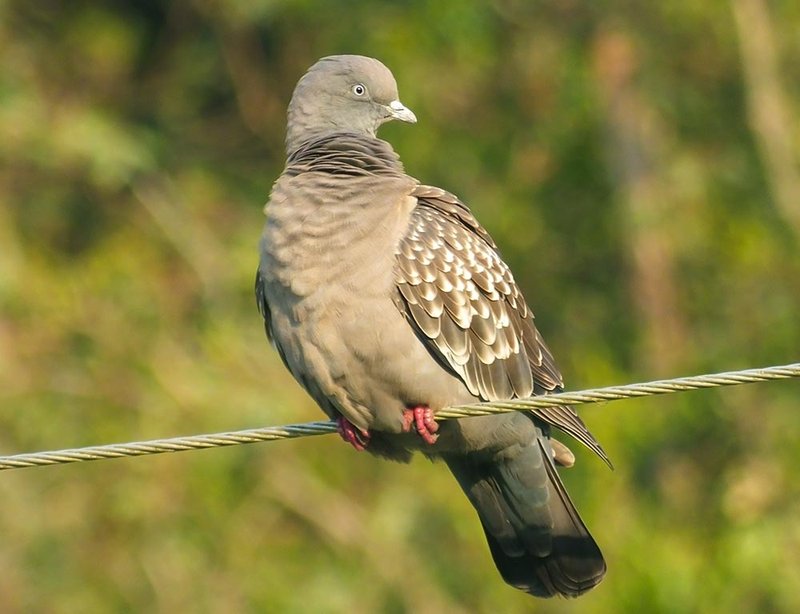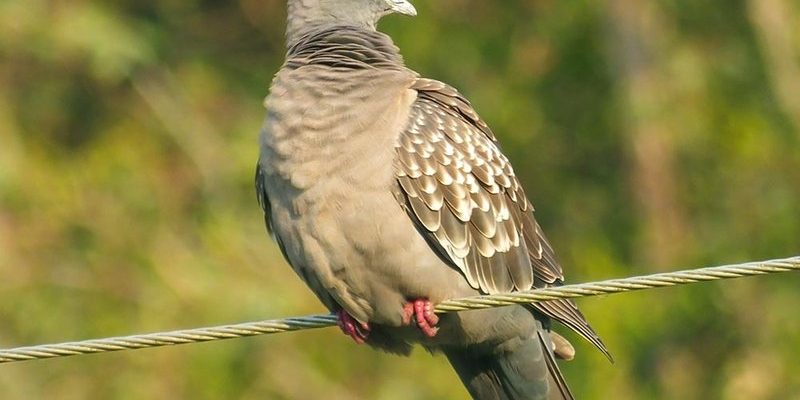
So, where exactly can you spot these adaptable birds? From urban settings to rural landscapes, pigeons have a knack for making themselves at home just about everywhere. They thrive in different climates and habitats, sometimes working alongside their human neighbors. Let me guide you through the various environments where you might catch a glimpse of these birds, and sprinkle in some fun facts along the way!
Urban Environments: The Pigeon’s Playground
If you’re in a city, you’re likely no stranger to the sight of pigeons soaring overhead or waddling along sidewalks. Urban areas provide the perfect habitat for these birds. Tall buildings mimic the cliffs and ledges that rock pigeons naturally favor for nesting. They often find cozy spots in parks, on rooftops, or even in the nooks of historic architecture.
Pigeons are particularly known for their ability to adapt to human activity. They’ll scavenge for food in open-air cafes, parks, and markets, making them a familiar sight in bustling urban squares. Plus, they have an innate talent for navigating through busy streets, often dodging traffic with impressive agility. Honestly, their resilience and adaptability in cities is quite remarkable!
In cities like New York, Paris, and London, pigeons have become so iconic that they almost define the landscape. You might find them gathering near the famous fountains or monuments, adding to the vibrant atmosphere. If you’re looking to spot a pigeon in an urban area, parks like Central Park in New York or Place des Vosges in Paris are excellent spots.
Coastal Habitats: A Shoreline Delight
Moving beyond the city, let’s talk about coastal habitats. Pigeons are frequently spotted along shorelines, balancing on rocky cliffs or sandy beaches. The rock pigeon, in particular, has a natural affinity for these environments, mimicking its original habitat of seaside cliffs and rocky coastlines.
In these settings, pigeons can be seen foraging for food, often close to human activity. They’ll commonly hang out near fishing piers or seaside cafés, where scraps are plentiful. Picture it: a beautiful day at the beach, and there’s a pigeon strutting about, seemingly carefree while it searches for a snack. It’s a nice reminder of how easily these birds blend into various environments.
Coastal areas not only provide food sources but also nesting sites. Pigeons utilize the crevices in rocks or the ledges of coastal structures to build their nests safely away from predators. If you’re near the coast, keep an eye out for them—they might just surprise you with their ability to thrive in the salty air!
Rural Regions: The Quiet Life
You might think of pigeons as city slickers, but they also have a place in rural regions. Farms and farmlands offer plenty of resources for these birds. Whether it’s seeds from crops or grains left behind, rural settings can provide an abundant food supply.
In the countryside, pigeons often nest in barns, silos, and old buildings, where they find shelter and safety. These locations mimic their historical nesting preferences of cliffs and rocky outcrops. Farmers may sometimes see them as pests, but they also appreciate the natural beauty these birds bring to their land.
If you’re looking to spot a pigeon in a rural area, head to farms, quaint village squares, or even nearby fields. Often, you’ll catch them soaring gracefully in the open sky or perched atop a barn, enjoying the serenity of country life.
Natural Reserves and Parks: A Haven for Pigeons
Pigeons also thrive in natural reserves and parks. These protected areas offer the perfect mix of greenery and open space. Here, they can roam freely, forage for seeds, and even engage in their social behaviors without much disturbance.
Many parks and reserves are designed to support wildlife, which makes them ideal habitats for pigeons. They often find ample food supplies in gardens, fields, and near water sources. Plus, the less chaotic environment allows pigeons to nest and raise their young with a bit more peace.
Take a stroll through your local park, and you might find a pigeon or two exploring the grassy areas. It’s a great way to observe their social interactions and unique behaviors. They often flock together in small groups, engaging in playful antics that can be quite entertaining to watch.
Global Reach: Pigeons Across Continents
What’s fascinating about pigeons is their global reach. These birds are found on nearly every continent except Antarctica. They’ve adapted to various climates, from tropical rainforests to arid deserts, showcasing their incredible versatility.
In places like South America and Africa, various pigeon species have evolved, adapting to their unique environments. For instance, the Columba livia isn’t the only player in the game. There are numerous other species like the Nicobar pigeon that thrive in tropical regions, showcasing vibrant plumage and distinct behaviors.
If you’re a traveler, keeping an eye out for different pigeon species can be a fun way to connect with local wildlife. Whether you’re wandering through bustling markets in Asia or exploring serene landscapes in Africa, you’re likely to cross paths with these fascinating birds.
Pigeons are more than just city dwellers; they are adaptable, resilient birds that have carved out a niche in almost every habitat around the globe. From the concrete jungles of bustling cities to the peaceful expanses of rural landscapes, you can find them almost anywhere.
As you venture out, keep an eye out for these feathered companions. Whether they’re pecking at crumbs, soaring gracefully overhead, or nesting in a cozy nook, they’re a reminder of nature’s ability to thrive alongside humanity. So the next time you see a pigeon, take a moment to appreciate its journey and resilience; it truly stands as a symbol of adaptability in our ever-changing world.

